Collections & Research

Records of the Electric Launch Company
Manuscripts collection 213, history of electric launch company.
Electric Launch and Navigation Company, later known as Electric Launch Company (“Elco”), may be said to have been born at the Colombian Exposition of 1893 in Chicago. 55 launches, each 36 feet long and powered by battery-powered electric motors, carried over a million passengers on the waterways of the Exposition from April 15th through October 31st, 1893.
From 1892 through two World Wars and up to the time of its closing in 1949, Elco designed and built – or had built – more than 6,000 pleasure boats ranging in size from an 18 foot gig or yacht tender to cruising power boats up to 127 feet in length. It also built craft for the government of the United States and of other countries including lifeboats for the U.S.Coast Guard, launches and tenders for various navies, anti-submarine motor launches in World War I, and PT boats in World War II.
It is not known precisely who founded Elco. Electric motors that could be used for marine application had been invented by William Woodnut Griscom of Philadelphia in 1879, and in 1880 he started the Electric Dynamic Company. In 1892 Griscom’s electrical company went bankrupt, and Electric Dynamic Company was bought by Isaac Leopold Rice who founded Electric Storage Battery Company (“Exide”). Rice had become interested in Electric Launch Company; they had been buying his storage batteries. He also was interested in Holland Torpedo Boat Company. He purchased the latter and merged it, along with Elco, into the Electric Boat Company in 1899. In 1900, Elco, which had previously acted as middleman by farming out the hull contracts and installing Griscom’s motors and Rice’s batteries, built its own boat-building facility at Bayonne, NJ.
Henry R. Sutphen joined Elco in 1892, and may have been one of its founders. It was he, more than any other person, who built the pleasure boat interest. He ran Elco from 1895 to 1949. In 1906 he hired Irwin Chase, a young naval architect. It was Chase who designed the 550 sub-chasers for the British in 1915, and he created the famous Elco “Cruisette”. In 1922 Chase became General Manager of Elco. His assistant in World War I was a designer, Glenville Sinclair Tremaine, who became the chief naval designer in 1923. The latter was joined by Alfred “Bill” Flemming. This team worked together during World War II building PT boats. After the war, Elco went back to building pleasure boats, but by 1948 it was just a small branch of the Electric Boat Conglomerate handled by John Jay Hopkins. Hopkins felt that Elco was not a profitable enterprise, and in December of 1949 the work force was let go, and the equipment, supplies and plant in Bayonne were sold.
Reference:Swanson, William C., Introduction and notes to Launches and Yachts, the 1902 Elco Catalog,1984.
Restrictions
Restrictions on Access
Available for use in the Manuscripts Division.
Restrictions on Use
Various copying restriction apply. Guidelines are available from the Manuscripts Division.
Index Terms
This collection is indexed under the following headings in the catalog of the G. W. Blunt White Library. Researchers desiring materials about related topics, persons or places should search the catalog using these headings.
Hopkins, John Jay Spear, Lawrence Y. (Lawrence York), 1870-1950 Sutphen, Preston L.
Corporate Bodies (Including Vessels):
Electric Boat Company Electric Launch and Navigation Company
Automobiles–Bodies Boatbuilding–New Jersey–Bayonne Bowling–Equipment and supplies Launches Marine engineering–New Jersey–Bayonne Yachts
Document Types:
Return to the Table of Contents
Administrative Information
Preferred Citation
Coll. 213, Manuscripts Collection, G. W. Blunt White Library, Mystic Seaport Museum, Inc.
Detailed Description of the Records
The following section contains a detailed listing of the materials in the collection.

Everything electric boats and boating

125-year-old electric boat company still making history
For this plugboats throwback thursday about a venerable electric boat company, bear with us for a quick quote from wikipedia :.
The Chicago World’s Fair was held in Chicago in 1893 to celebrate the 400th anniversary of Christopher Columbus’s arrival to the New World in 1492. The centerpiece of the Fair, the large water pool, represented the long voyage Columbus took to the New World. The Exposition was an influential social and cultural event and had a profound effect on architecture, sanitation, the arts, Chicago’s self-image, and American industrial optimism.
And now to explain what in the world’s fair any of that has to do with electric boats, and also what it has to do with the 2018 Newport International Boat Show!
Let’s begin with this passage from Kevin Desmond’s excellent and comprehensive book ‘Electric Boats and Ships: A History’ ( you can buy it here from Amazon ).

“Launch and boat builders are requested to send bids for supplying fifty 34-foot boats to be propelled by power of any description, and to be able to carry thirty people, to Chief Burnham, Marine Division, Transportation Exhibits Department, World’s Fair, Chicago”
The book goes on to explain that “four companies submitted proposals: two for steam powered boats and two for electric powered boats, and all were asked to provide demonstrations. After the tryouts, the winning bid was from the Electric Launch & Navigation Company. ”
It was rather fitting that an electric boat should win the contract, as one of the main exhibition buildings on the fairgrounds was the Electrical Building and the fair was a big part of the end of War of the Currents between direct current and alternating current and a dramatic demonstration of the winning AC system.

When U.S. President Grover Cleveland pushed a button to inaugurate the 690 acre fair, it literally lit up with 11,000 kilowatts of electricity powering 250,000 electric light bulbs, instantaneously igniting wonder in everyone.
Kevin goes on to detail the achievements of the 50 electric boats themselves.
“ Managed by General C.H. Barney, the fleet of launches made 66,975 trips during the six and a half months of the exposition, carrying 1,026,346 passengers 200,925 miles (323,357 km) and earning $314,000 for the World’s Fair organizers.
Their greatest test came on Chicago Day when 622 trips, each trip of three miles, were made by fifty boats. Six of these boats averaged over 40 miles (65 km), carrying on each trip about 40 people.
There were no fewer than 25,000 passengers carried that day alone.

Not bad for a company that had incorporated a month after the first bids were requested, and which had no plant, no equipment, no staff of boat builders or designers, and no track record. ”
There is a lot more about the boats in the book, including their origins as sewing machine motors, details on how they were charged, descriptions of rides by passengers, and of course the role of the boats in electric propulsion history. Safe to say the history is pretty colourful, and it is a history that comes right up to today.
The World’s Fair was only the beginning
Let’s skip forward from the Fair. The Electric Launch & Navigation Company – Elco – went through some ownership and name changes, and wound up as part of the Electric Boat Company. By 1910 the gasoline (or explosive) engine overtook electric boats in popularity and Elco switched to making boats with those motors. Its most popular was the 26 foot Cruisette cabin cruiser. (There’s a great gallery of historic images on the Elco site.)

During the first World War it built boats for both the British and U.S. navies and throughout WWII built more of the 80 foot PT (patrol torpedo) boats than any other manufacturer. In the movie PT-109 about future President John F. Kennedy’s exploits on one of the boats, the Elco script logo can clearly be seen in a few scenes.
In 1952 the company got out of consumer boats and merged with several other navy and air force contractors. That company, General Dynamics , is now a global aerospace and defence company known for its Gulfstream jets and for its continuing Electric Boat division, which has built 15 of the U.S. Navy’s 19 classes of nuclear submarines.
In 1987 a gentleman by the name of Joe Fleming approached General Dynamics with the idea of acquiring the dormant Elco name and building replicas of the old Elco launches. He was successful, and this new ELCO made new launches in the old style as well as provided parts and assistance in restoring some of the old vessels. Yes – they were still around almost 100 years later!

In 2009 ELCO was purchased by Steve Lamando, a highly successful investor and lover of classic wooden boats. Not only was he attracted by the lure of the company’s legacy and place in boating history, he also saw a growing market for electric propulsion.
As he (and Joe Fleming, who is still the company’s Chief Engineer) told Trade Only Today magazine in 2014 : “Just as the public cast aside steam propulsion, I believe that in this century we’re going to be casting aside diesel and gasoline.’
‘As we saw where the car industry was going, where battery technology was going in terms of lighter and more power, we decided we also needed to jump into this growing market. We made the strategic decision to focus on electric propulsion for the marine industry.”
ELCO now makes electric motors of all sorts and sizes
In its current incarnation, Elco is officially named Elco Motor Yachts and still makes electric launches that are very similar to the original. But the larger and longer focus is on the electric motors – both inboard and outboard. The inboards are the logical continuation of the technology that started with those original yachts and naval craft. ELCO makes both all-electric and hybrid motors for launches, (including the Cruisettes tugs, workboats, water taxis and other commercial craft. They are also applicable to sailboats.

Last year, in 2018, ELCO introduced a 50 hp all electric outboard motor. Which brings us full circle.
Because when the editors of Cruising World, Sailing World, and Yachting sat down to judge the entries in the prestigious and highly respected Newport International Boat Show New Products Awards , there at the front of the pack, for Best New Green Product, was the Elco Motoryachts EP-50 Electric Outboard Motor, 125 years after the company and its original products were introduced to the brave new world of AC electricity at the Chicago World’s Fair.
You can find out more about ELCO’s motors and boats on the company’s website .
And find out more about the history of electric boats and ships in: Electric Ships and Boats: A History .
- ← Zero carbon ship resumes global research mission
- Global hydrogen ship arrives in Antwerp →
Leave a comment Cancel reply

Get all the latest electric boats and boating news delivered to your mailbox!
Sign up here for the plugboats newsletter..
IT’S FREE!
Email address:
No, thanks.
Terms and Conditions - Privacy Policy

The most comprehensive and authoritative history site on the Internet.
Elco PT Boat: 80 Feet of Wood and Weaponry
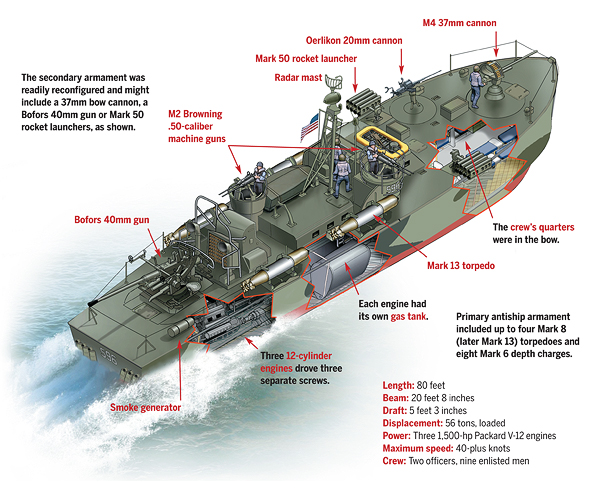
During World War II the Elco Naval Division of the Electric Boat Co., in Bayonne, N.J., built nearly 400 patrol torpedo, or PT, boats for the U.S. Navy. Of those, 326 were 80 feet long—the largest in their class. These fast, light vessels, their hulls made of double-planked mahogany, have been portrayed on-screen torpedoing larger Japanese warships in daring night raids in the Pacific. In reality, they seldom succeeded in such attacks. An exception was PT-137 , which during the Battle of Surigao Strait on Oct. 25, 1944, landed a disabling hit on the Japanese light cruiser Abukuma , which fell behind its fleet and was sunk by B-24 bombers the next morning. But perhaps the best known of the Elco boats was the ill-fated PT-109 , skippered by Lt. j.g. John F. Kennedy, future 35th president of the United States. On the night of Aug. 2, 1943, the Japanese destroyer Amagiri caught PT-109 idling in a strait off the Solomon Islands and rammed the smaller vessel, killing two crewmen and injuring Kennedy.
While their primary mission was to attack enemy shipping, what PT boats did more often was to provide fire support for troop landings, lay and destroy mines, carry out rescues and harass enemy coastal supply lines, a mission that earned them the nickname “barge busters.” In the Mediterranean Sea they wrought similar havoc on heavily armed German supply barges called F-lighters as well as their torpedo-laden German counterparts, the E-boats. At war’s end the Navy stripped, beached and burned most PT boats, but one 80-foot Elco, PT-617 , survives at the Battleship Cove Naval Museum in Fall River, Mass.
Related stories

Portfolio: Images of War as Landscape
Whether they produced battlefield images of the dead or daguerreotype portraits of common soldiers, […]

Jerrie Mock: Record-Breaking American Female Pilot
In 1964 an Ohio woman took up the challenge that had led to Amelia Earhart’s disappearance.

The Poignant Tale Behind a Celebrated Civil War Sketch
To artist Edwin Forbes, William Jackson of the 12th New York was an everyman Union soldier, a “solemn lad… toughened by campaigning.” There was much more to Jackson’s story.

The Scandal that Led to Harry S. Truman Becoming President and Marilyn Monroe Getting Married
Did Curtiss-Wright deliberately sell defective engines to the U.S. Army during WWII?
- 2024 BOAT BUYERS GUIDE
- Email Newsletters
- Boat of the Year
- 2024 Freshwater Boat and Gear Buyers Guide
- 2024 Boat Buyers Guide
- 2024 Water Sports Boat Buyers Guide
- 2023 Pontoon Boat Buyers Guide
- Cruising Boats
- Pontoon Boats
- Fishing Boats
- Personal Watercraft
- Water Sports
- Boat Walkthroughs
- What To Look For
- Best Marine Electronics & Technology
- Watersports Favorites Spring 2022
- Boating Lab
- Boating Safety

100 Years of Electric Boat Development
- By Capt. Vincent Daniello
- Updated: July 18, 2017
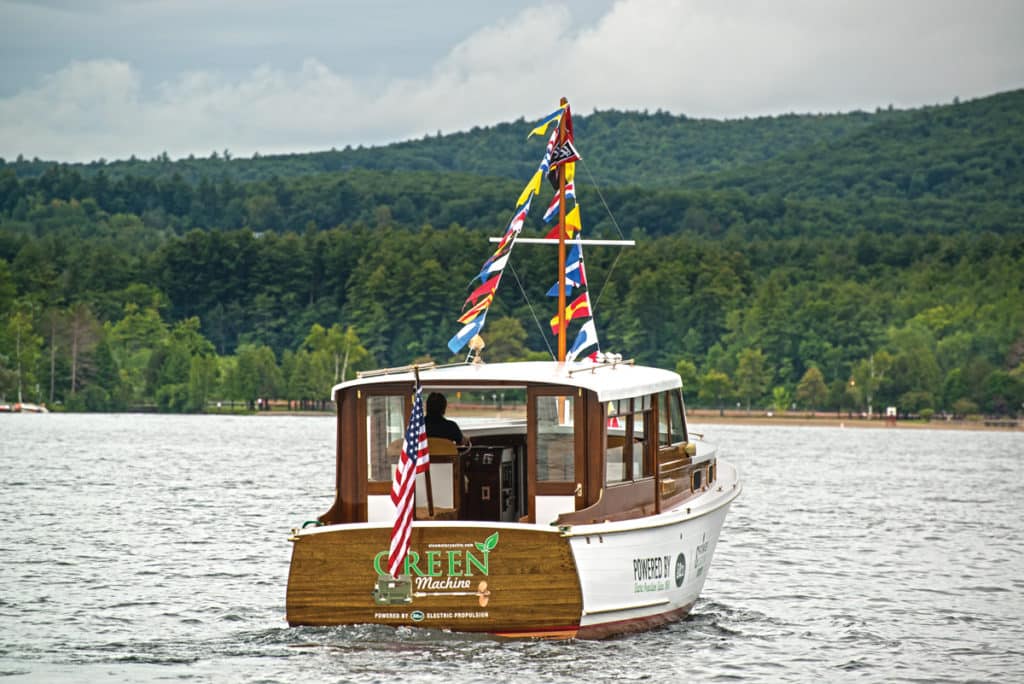
Electric motors and battery capacity will exceed the horsepower and range of gas engines and a tank full of fuel. When that happens, internal combustion engines may vanish as quickly as a stack of $20s at the gas dock. How soon will that happen? Likely before first-graders today are ready to buy their first boat, and possibly before they’re in college.
Says who? We went aboard electric boats and talked to industry insiders for the scoop on electric boating’s future. Come aboard as we explore 100 years of electric boat development.
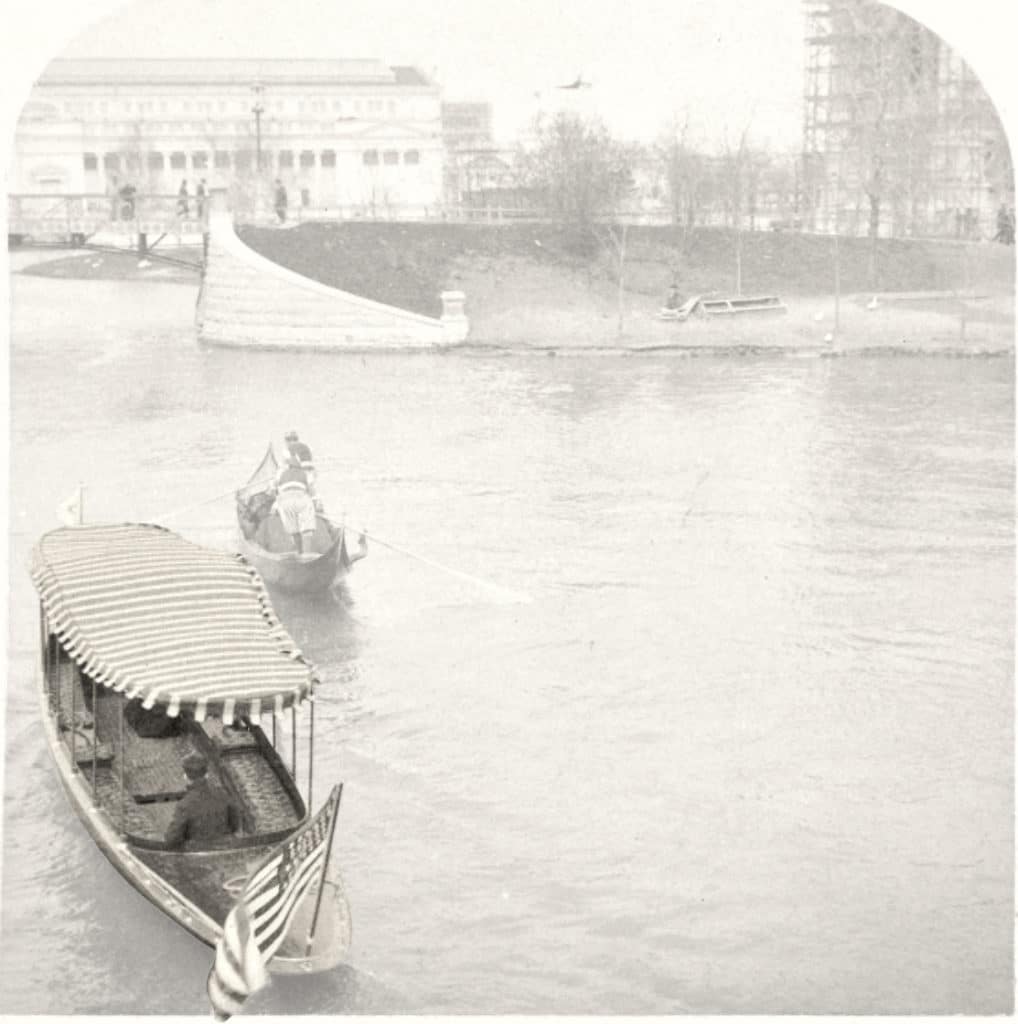
In the Beginning “Over a period of 30 years, boats went through five different methods of propulsion: steam, naphtha, electric, gasoline and diesel,” exclaims Joseph Fleming, the head of engineering for Elco, builders of electric boats and propulsion systems. But practical, safe motorboating began at the 1893 Chicago World’s Fair, where 55 electric launches ferried attendees. The fair was the first-ever large-scale use of electricity. “At the time, electric boats were most practical,” Fleming says.
Consider Wenona , a 32-foot launch built in 1899 by the Electric Launch Co. — now Elco — the company that built those World’s Fair launches. A 5 hp electric motor pushed Wenona at 7 mph for more than 60 miles between charges without smoke, soot, noise or open flame.
What happened to electric-powered boats? Gottlieb Daimler invented the high-speed gasoline engine, which he used in 1886 to propel a 15-foot skiff along at 7 mph — the first gas-powered boat, and Rudolf Diesel ran his first successful prototype engine in 1893. “By the end of World War I, gasoline engines became the preferred propulsion for boats,” Fleming says. At the time, boats could go faster and farther on liquid fuel than they could on batteries.
VIDEO! We ski behind an electric boat!
A century later, the tide may be swinging away from fuel. Elco recently restored a 34-foot 1941 Cruisette. When built, the original 125 hp Chrysler gasoline engine pushed Green Machine to 16 mph, and now the new 70-horsepower-equivalent Elco electric motor’s practical cruising speed is 8 mph — clearly not performance that lands a boat on the cover of Boating . However, some motors on Elco’s drawing board can exceed Green Machine ‘s original gas engine’s performance. What’s the holdup? Batteries. Fleming calculates the boat would go 9.4 miles at 16 mph using her bank of 18 24-amp-hour, absorbed glass mat (AGM) batteries.
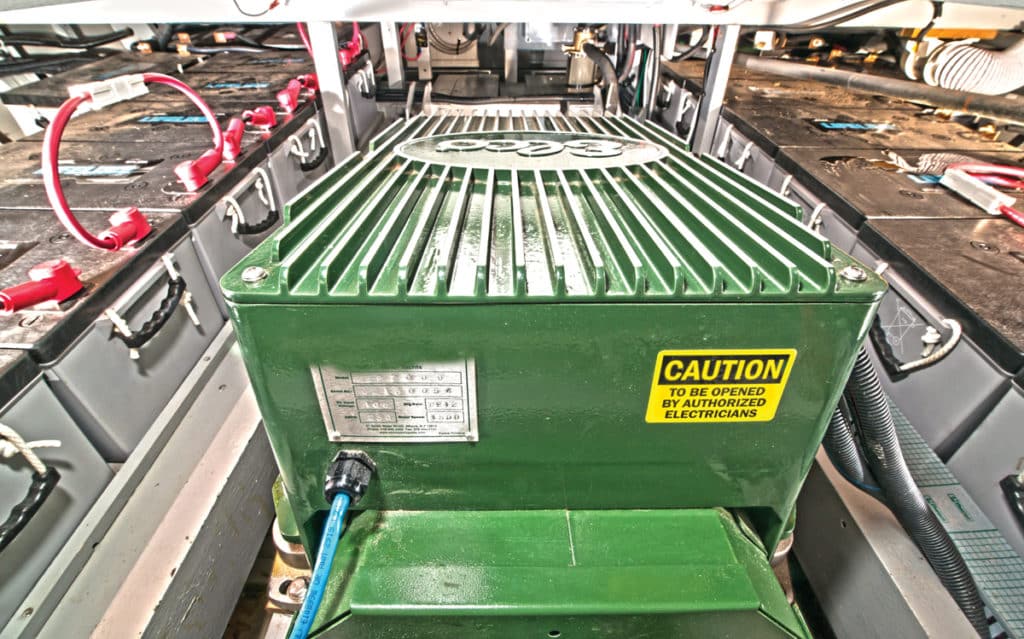
Power to the People “We reached the capacity of lead-acid technology 50 years ago,” says Daan Hobbelen, who heads the power storage labs at Mastervolt, makers of marine batteries, chargers, inverters and propulsion systems. “We can make lead-acid better for starting, better for storage, lower maintenance, but there isn’t much we can do to add power density.” Lithium iron phosphate (LiFePO4), currently the best alternative, more than doubles Green Machine ‘s range to 20.4 miles using batteries weighing the same as her existing AGM batteries. “Production improvements should increase energy density another 40 percent, and the cost will come down,” Hobbelen says.
Lithium sulfur (Li-S) is the upcoming battery technology, currently with about double the energy density of LiFePO4. Hobbelen expects cost-effective production within five years, and he anticipates double that capacity — four times today’s best lithium batteries — in 10 years. That would extend Green Machine ‘s 16 mph range past 80 miles.
Learn about electric hybrid marine propulsion.
Five hours of cruising time clearly isn’t acceptable, but just as diesel engines became lighter — 50 percent more horsepower per pound just in the past 20 years — electric motors will be lighter too. “We can hit one horsepower per pound,” Fleming says. Green Machine ‘s existing Elco motor weighs 10 times that. (Modern diesels average 1.5 pounds per horsepower.) Increased horsepower for the same weight motor allows boats to carry more batteries, extending range, increasing speed or both. Doubling the weight of Green Machine ‘s batteries requires just 20 percent more horsepower to maintain performance, so with expected battery technology, in 10 years that should be a 160-mile range aboard a 34-foot boat cruising at 16 mph.
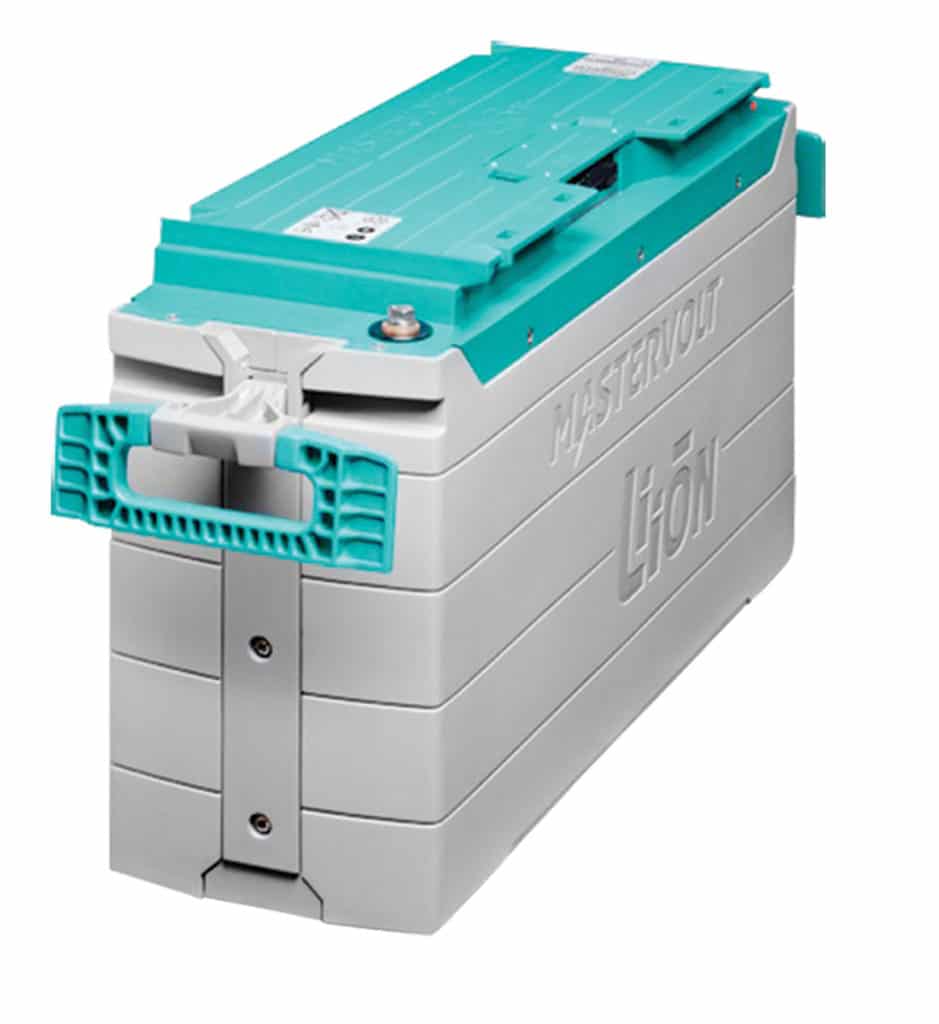
Admittedly, 16 mph won’t cut it for many boaters. How about 120 mph? Cigarette’s 38 Top Gun powered by Mercedes AMG electric propulsion makes 2,220 horsepower. Four behemoth, liquid-cooled lithium-ion batteries provide the boat with 240 kilowatt-hours of storage — the equivalent of a 5 kW generator running for 48 hours. But the boat’s range would be more easily calculated with a stopwatch than a GPS — 7.3 minutes for 14.6 miles at 120 mph.
Even lithium sulfur leaves an electric Top Gun’s range at less than 50 miles — 25 percent of the 200-mile wide-open-throttle range at 85 mph of a gas-powered 38 Top Gun. What closes the gap? “Lithium air promises about 10 times the energy of lithium batteries we have today,” says Christoph Ballin, who co-founded Torqeedo, pioneering maker of electric marine motors. “Once that can be produced economically, electric propulsion will take hold as quickly as digital cameras took over film.”
Lithium-air (Li-air) batteries are already being produced in small numbers, and electric propulsion technology is progressing quickly. “When we started Torqeedo in 2005, there wasn’t a single electric outboard using brushless motors or a single lithium battery being used,” Ballin says. Before that, pontoon boats and restored classic runabouts on “green” lakes in Europe and the United States were propelled by electric trolling motors. “Their overall efficiency is 15 or 20 percent,” he states. “We’re currently at 56 percent overall efficiency,” Ballin says, with most of those losses in the propeller and lower unit. Today’s electric motors use 98 percent of power consumed to turn the shaft, and that efficiency holds over most of their operating rpm range. Even the century-old Wenona applies 80 percent of its battery power to the propeller shaft. Gasoline engines today are around 25 percent efficient before drive and propeller losses, though liquid fuel’s greater power density — the energy it packs into a given volume — still makes up for that over batteries. Electric motors are projected to be much smaller than gas engines too — an outboard of the future won’t be much larger than a lower unit today. Motors contained belowdecks free cockpit space, and pods might contain the motors completely within their lower units, freeing space below.
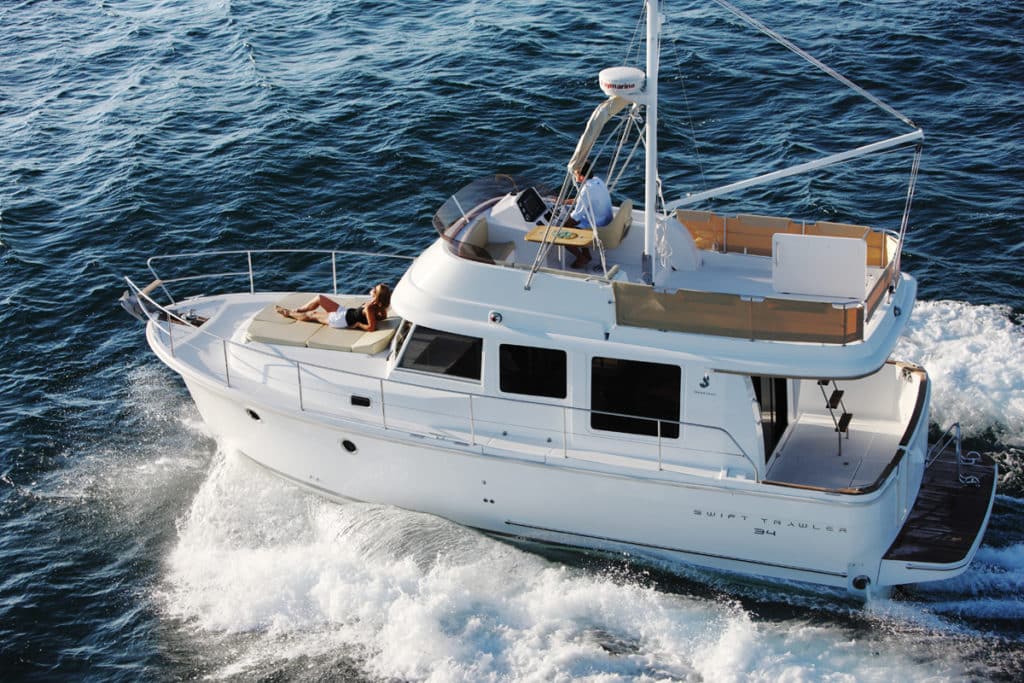
Cost Benefit Analysis Even the high price of current lithium batteries may favor electric boats, say the experts. “Calendar life of lithium batteries is 20 years,” Hobbelen says, compared with about five years for AGM. “If you compare life cycles, AGM can expect 500 cycles at 50 percent discharge. Lithium ion exceeds 2,000 cycles at 80 percent discharge. Cost over a battery’s kilowatt-hours during its life is lower on lithium than it is with AGM.”
What about charging time? “From 95 percent state of charge down to about 10 percent, lithium produces a very constant chemical reaction,” Hobbelen says, which means little lost to heat, even under high power demand. Conversely, Hobbelen adds, “You can charge a bank of lithium batteries to 95 percent of full charge in about 20 minutes.” The 440 volts required is readily available on streetside power poles. “The automobile industry is facing similar rapid-charging issues,” Hobbelen says. “It’s likely marinas will use those automotive solutions.” The American Boat and Yacht Council (ABYC) is already contemplating safety standards for 400-volt DC systems that will drive and charge electric boats.
A Marine Battery Primer
Maintenance might be another nail in the gas-engine coffin. When refurbished three years ago, Wenona ‘s original, 116-year-old electric motor needed little work. Elco claims 50,000 hours essentially maintenance-free from its current, three-phase, alternating current motors. Torqeedo claims about the same for its brushless DC system. Of the limiting factor, Ballin says: “The electronics that control the motor will be able to start and stop maybe 50,000 times,” far outlasting most boats. High-voltage, incredibly high-amperage DC systems do require vigilance, though. “Have the system inspected every two years or 200 hours,” Ballin advises.
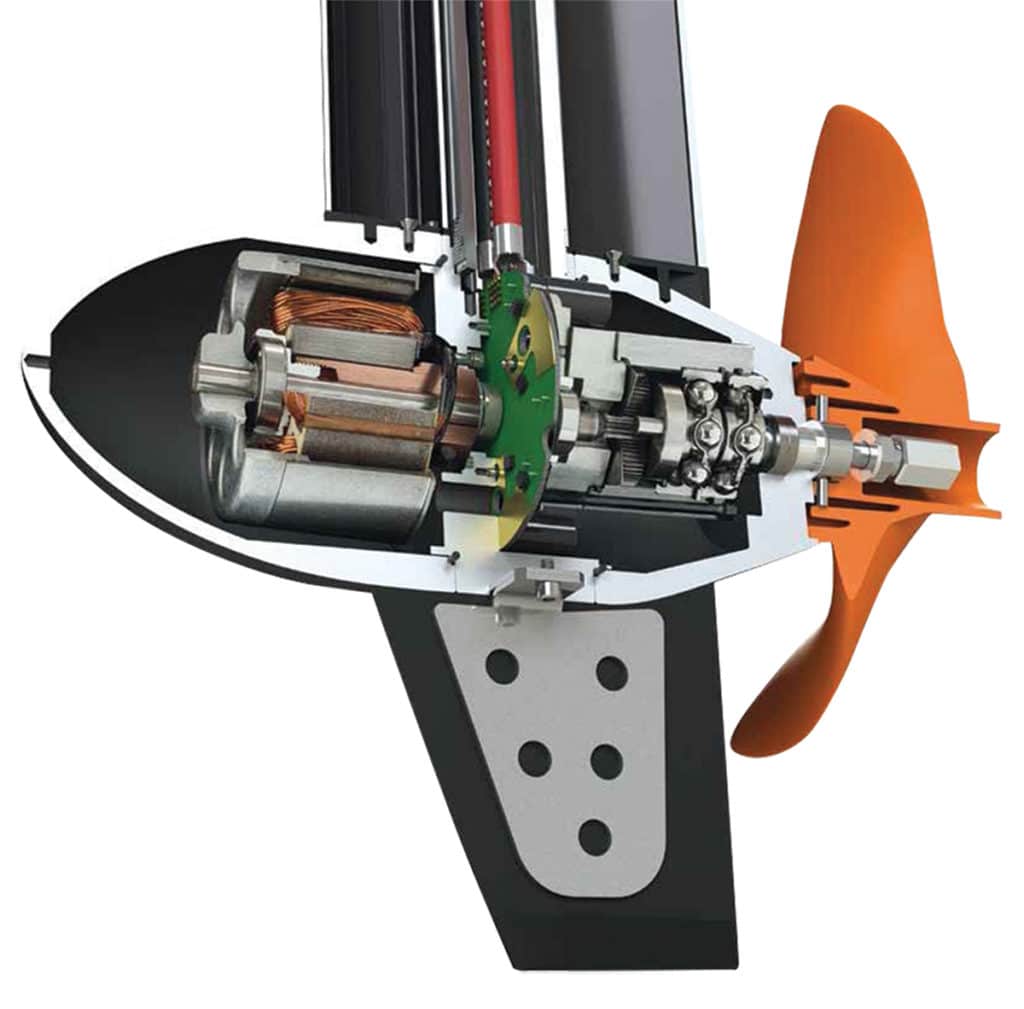
Switch Hitters So where does that leave electric powerboats now? Parallel hybrids provide the means to go fast on internal combustion engines while using electric power for slow cruising. Serial hybrids extend electric-motor range using generators to charge batteries. Beneteau’s prototype 34 Swift Trawler, Current Affairs , is actually both. The boat’s standard 425 hp Cummins diesel inboard provides cruising at 20 mph, while an Elco 20 hp equivalent electric motor and 12 220-amp-hour AGM batteries push the boat to 5.7 mph for 19 miles. What’s more interesting is that, using about half the output of the boat’s 7.5 kW generator, Current Affairs runs on electricity continuously, without depleting batteries, at 4.5 mph. Conversely, the diesel engine turning the electric motor provides 7.7 kW of alternating current using an inverter, providing redundant backup to the generator’s electric output.
“Not just being green, but from an economic standpoint, there are a few niches where pure electric propulsion makes sense, and others where hybrid makes sense,” Ballin says. “With improvements in battery technology, more of these niches become practical.” Ballin sees a task of our generation is to expand green mobility. “Without affecting our on-the-water activities, we need to make boating cleaner, make it nicer, make it sustainable,” he says. But dollars — making boat propulsion less expensive — may drive that shift to green power as much as advances in battery technology.
- More: batteries , Boats , elco , electric boats , electric motors , Engines
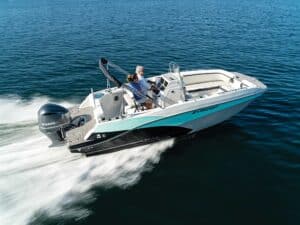
Boat Test: 2024 Starcraft SVX 231 OB CC
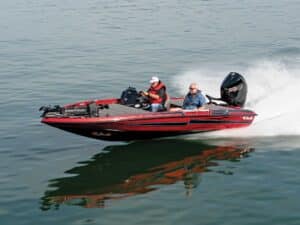
Boat Test: 2024 Bass Cat Caracal STS
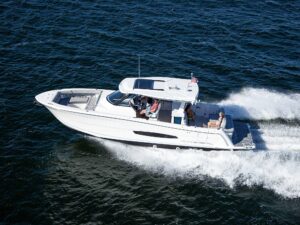
Boat Test: 2024 Regal 38 Surf
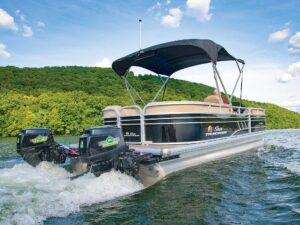
Using Hydrofoils to Improve Boat Performance
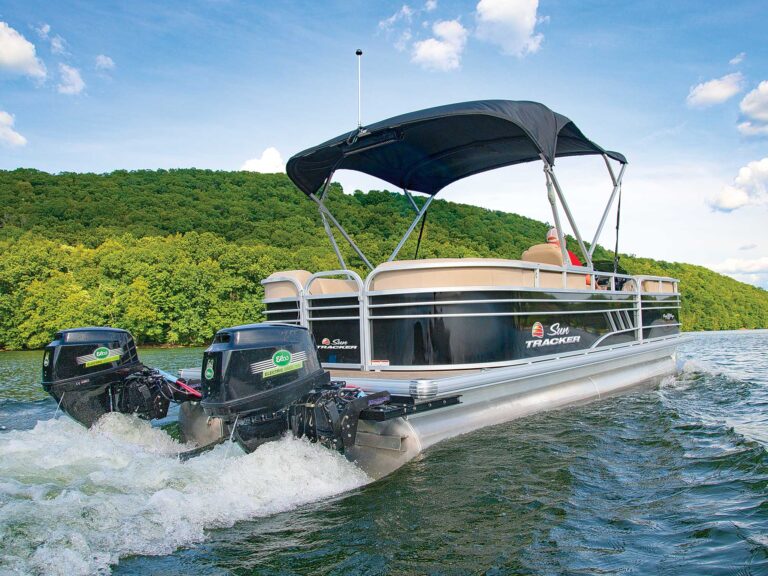
We Test Interlux Trilux 33 Aerosol Antifouling Paint
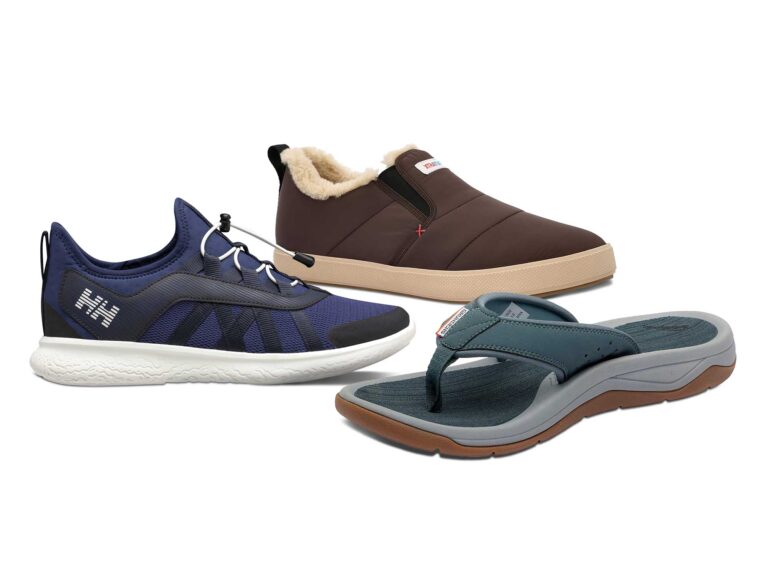
Boating Shoes for Spring and Summer

MasterCraft Celebrates International Women’s Day With Fourth Annual ‘Let Her Rip’ Campaign

- Digital Edition
- Customer Service
- Privacy Policy
- Cruising World
- Sailing World
- Salt Water Sportsman
- Sport Fishing
- Wakeboarding
Many products featured on this site were editorially chosen. Boating may receive financial compensation for products purchased through this site.
Copyright © 2024 Boating Firecrown . All rights reserved. Reproduction in whole or in part without permission is prohibited.

Classic Yacht Register
- Bell Harbor 2023
- Yachts For Sale
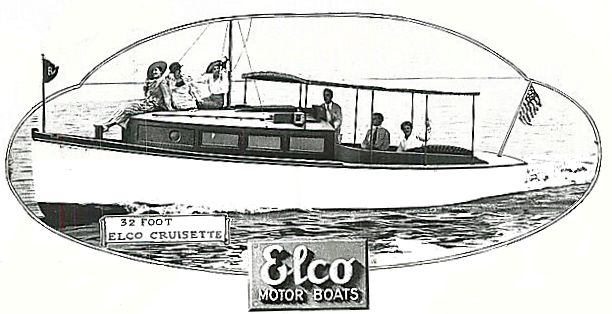

Additional Links
File attachments.
Quick List Links:
- Show All Listings
- Astoria Marine
- Blanchard Boat
- Boeing/Hoffar Beeching
- Chris Craft
- Dawn Cruisers
- Fellows & Stewart
- Grandy Boat
- Kneass & Sons
- Lake Union Drydock
- Mathis/Trumpy
- Matthews Boat
- Mojean & Ericson
- Shain/Trimmerships
- Trumpy/Mathis
- Robert Allan
- D. M. Callis
- Leigh Coolidge
- Henry J. Gielow
- William Hand
- H. C. Hanson
- Presidential Yachts
- Work Boat/Yachts
- Yachts in War
Elco Yachts
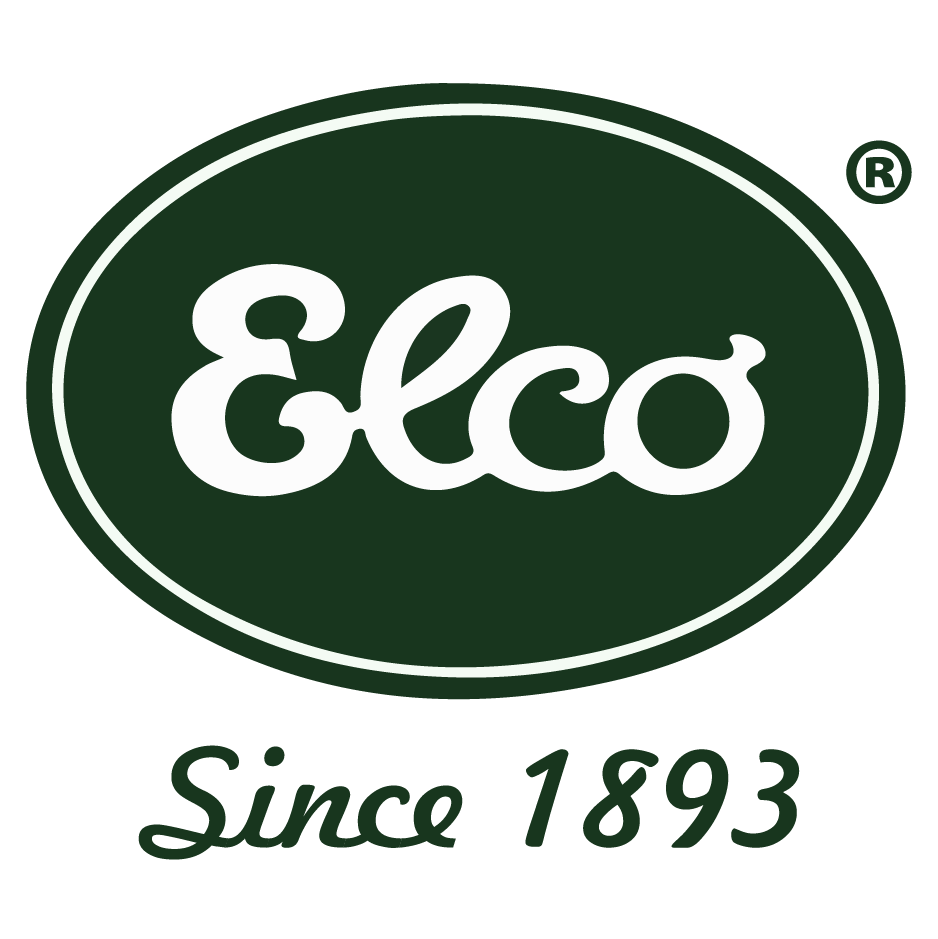
Elco Galleries

Ready to find your motor?
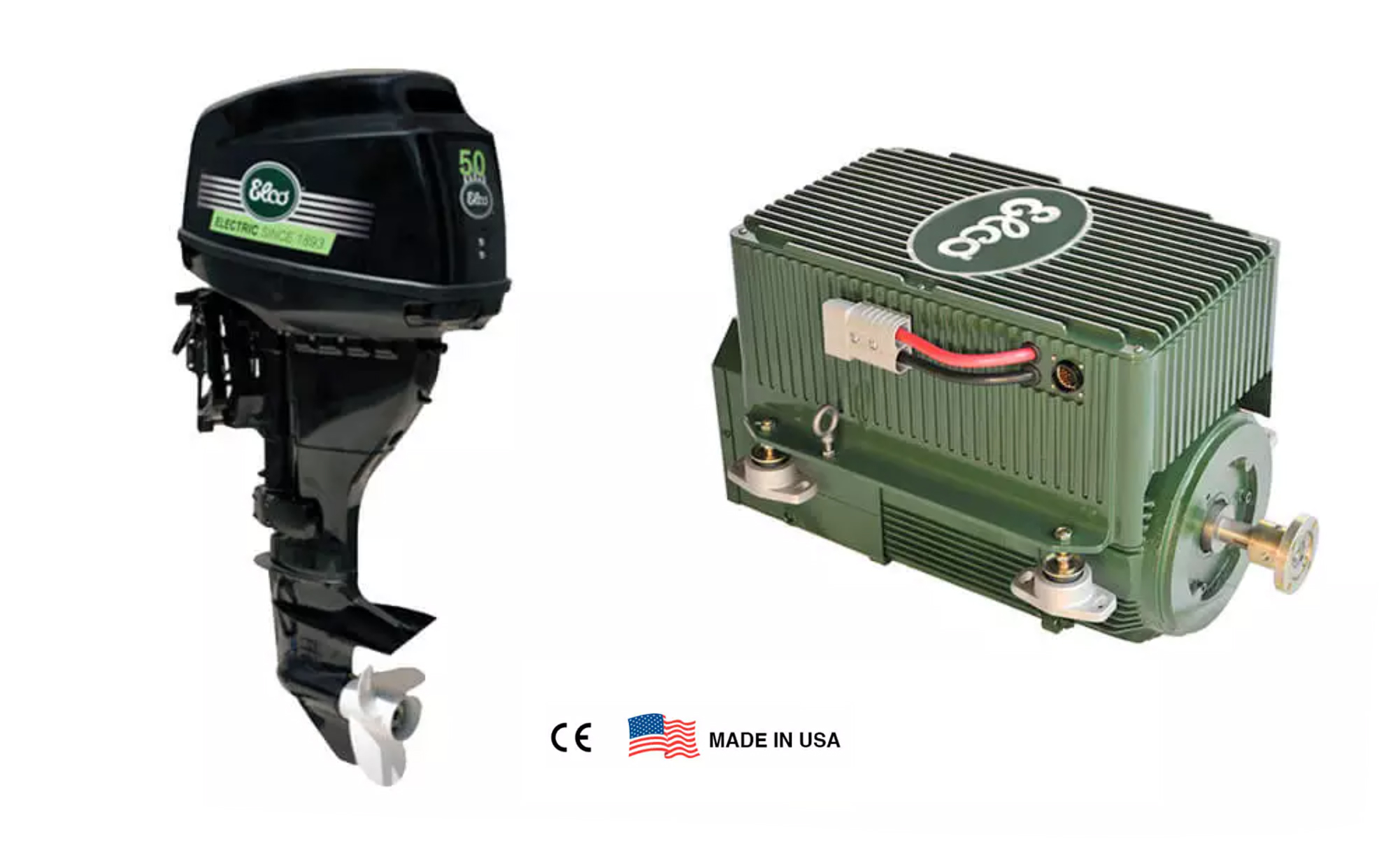
Have Questions? Call or Email
+1 877-411-3526.
Quick Shopping Links
- Electric Outboard Motors
- Electric Outboard Motor 5 HP
- Electric Outboard Motor 9.9 HP
- Electric Outboard Motor 14 HP
- Electric Outboard Motor 20 HP
- Electric Outboard Motor 30 HP
- Electric Outboard Motor 50 HP
- Electric Inboard Motors
- Electric Inboard Motor 6 HP
- Electric Inboard Motor 12 HP
- Electric Inboard Motor 20 HP
- Electric Inboard Motor 40 HP
- Electric Inboard Motor 70 HP
- Electric Inboard Motor 100 HP
- Electric Inboard Motor 200 HP
Battery Chargers
- NOCO GEN 2 Deep Cycle Battery Charger
- NOCO GEN 3 Deep Cycle Battery Charger
- NOCO GEN 4 Deep Cycle Battery Charger
- NOCO GX2440 Lithium Battery Charger
- NOCO GX4820 Lithium Battery Charger
- EV- AGM / Lithium Battery Charger
- Electric Boat Motor Batteries & Accessories
- Elco Classic Launches
- Elco in the News
- Customer Stories
- Press Releases
- Get Updates
- Benefits of Going Green
- Our Technology
- Frequently Asked Questions
- Honoring Heroes
- Tell us about your boat
- Dealer Application
- Dealer Log-In
- Return Policy
© 2024 Elco Motor Yachts. All Rights Reserved. Sitemap.
- Privacy Overview
- Strictly Necessary Cookies
This website uses cookies so that we can provide you with the best user experience possible. Cookie information is stored in your browser and performs functions such as recognising you when you return to our website and helping our team to understand which sections of the website you find most interesting and useful.
Strictly Necessary Cookie should be enabled at all times so that we can save your preferences for cookie settings.
If you disable this cookie, we will not be able to save your preferences. This means that every time you visit this website you will need to enable or disable cookies again.

Elco Motor Yachts has been making electric boats for 130 years
- March 6, 2023
- No Comments
THE PERFECT GIFT!
Give or treat yourself to a subscription to Boats in Motion print + digital and for only 39 euros a year you get the magazine at home plus read it on your PC, smartphone and tablet. With a sea of advantages.

Boot Düsseldorf 2023, 7 barche elettriche (7-9 m) da tenere d’occhio
Elco Motor Yachts, electric boating since 1893

Electric boats for 130 years

Leave a Comment Cancel Reply
Your email address will not be published. Required fields are marked *

Are you already a subscriber?
- Read your magazine from your pc here! >>
- Renew your subscription >>
- Reset your account password >>
Sign up for our Newsletter
Join the Sailing Newspaper Club

Powerboats, its stories, from small open to motoryachts. Sign up now for our free newsletter and receive the best news selected by the editorial staff each week. Enter your email below, agree to the Privacy Policy and click the “sign me up” button.
You may also be interested in.
“so i reinvented powerboats with axopar.” jan-erik viitala speaking..
We met Jan-Erik Viitala, co-founder and “front-man” of Axopar. Finnish shipyard turns 10 and celebrates with its new Axopar 29 , a contemporary reinterpretation of the first model made in 2014. Adventure boats. Is a new “flagship” coming for Axopar?
Otam 90 GTS (24 m), a “muscular” flagship with 5,200 horsepower
The Genoese shipyard Otam is celebrating 70 years. To best celebrate the milestone comes a 40-plus knot flagship. The big sports speedboat with a 90s flavor, but given a modern twist. She will make her debut at the upcoming Cannes
“Barcavelox” in the French style. He doesn’t give tickets, but everyone slows down. Here’s how
Barcavelox, the French have the pedagogical one. Now that boat speed detection systems are officially operational in Italy, let’s take a look at how in France, for the past 2 years, they have been experimenting at Port Camargue, the Barcavelox
Birth of electric boat rentals that you unlock with app
An electric boat rental service that you unlock and start via an app on your smartphone. The idea is Italian and was born out of the synergy between E-ssence-a start-up founded in 2023-and the Rome-based Navia shipyard. New green boats
- Advertising
- Subscriptions
53′ 1939 Elco Motoryacht
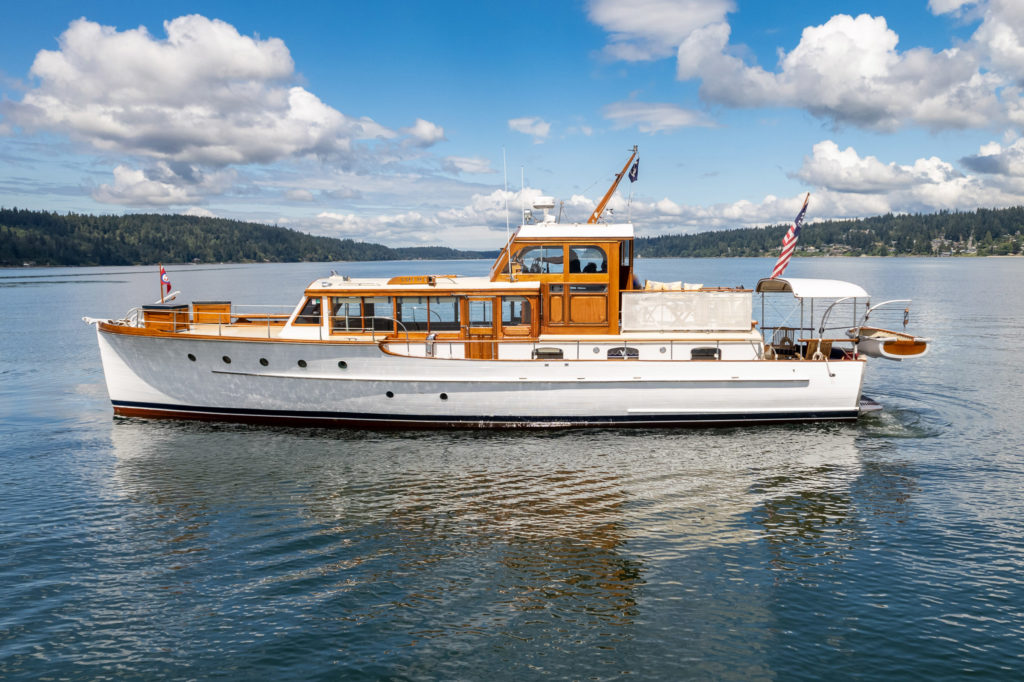
Captain an Art Deco classic with a fascinating past with this elegant 1939 Elco available from Chuck Hovey Yachts.
Lovers of classic yachting lore, have we got a treat for you this month. Not only is this handsome Elco 53 more than 80 years old and showing no signs of slowing down, it also has one of the most colorful resumes of any luxury yacht, including Hollywood glamour, famous owners, World War II service, Mafia connections, and Las Vegas glitz.
Built in 1939 by Elco Motor Yacht, the elegant craft was christened DO-HO as the flagship of the Elco fleet. First owned by restaurant chain creator Howard Johnson, the vessel was re-named the Alchade and then Southwind by other business-mogul owners over the next decade, while it cruised on the Great Lakes and the Eastern seaboard. During the second world war, the Southwind briefly served with the U.S. Coast Guard on close-shore security duty. In 1950, it was purchased by infamous Las Vegas mobster Morris “Mo” Dalitz, who brought the Southwind to Lake Mead in Nevada to serve as a hospitality boat for his Desert Inn Resort. By 1954, the yacht was relocated to Southern California, where it sailed for many years until 1983, when owner Vlad Worotko leased Southwind for use in the TV series “Riptide,” which ran for 56 episodes.
By 1997, the aging Southwind was renamed Riptide in homage to its TV stardom, and its owners began a painstaking, 25-year restoration process to bring it to its current glory in Port Orchard, Washington. Originally powered by twin Hall-Scott 250hp engines, the Riptide has since been refitted with two Gray Marine/Detroit Diesel engines, which produce a combined 470hp, giving the Riptide a cruising speed of 11 knots, topping out at 16 knots.
Amidships is the spacious main salon, where sliding doors open out to the port and starboard decks, and a built-in, L-shaped settee with customized cushions provides ample room for entertaining. The restored mahogany tongue-and-groove bulkhead surfaces feature original Elco lighting, Art Deco sconces, and large windows that allow for plenty of natural light. Heat in the salon is provided by either a Dickinson propane bulkhead heater or an electric fireplace.
The 83-year-old Riptide now has a thoroughly modern suite of navigation electronics, paired with its many Art Deco interior touches. New equipment in the fully enclosed wheelhouse includes a Garmin 740S Radar, GPS, Polaris VHF radio with RAM Mic, and Standard Horizon VHF with AIS. The helm, however, still retains echoes of its past, with original lever controls, a wooden ship’s wheel, and a 1940s-era helm chair.The galley has also been updated to include a Dickinson Mediterranean three-burner propane stove with oven, a GE microwave, and an Alder Barbour refrigerator. The original icebox remains intact.
Moving aft and down into the companionway, two single-berth guest cabins can be accessed along with a port-side head with original sink and cabinetry. Farther aft is the main stateroom, with a full-sized berth, a private head, an eight-drawer dresser, and a TV. Stairs lead to the aft deck, where plenty of seating can be found on custom embroidered teak deck chairs.The foredeck also has two custom mahogany box seats for additional lounging opportunities.
Restoration work on the Riptide continues today. In 2021, it was fitted with 29 new ribs, 14 new planks, new splash rails, a renewed steering system. All deck and cabin surfaces have been covered with Dynel cloth, set in epoxy, and painted with LP paint. The doors have also been rebuilt and fitted with Art Deco etched glass in keeping with the vessel’s 1930s charm.
Specs & Info
LOA 53’0” · Beam 13’9” · Draft 3’0”
Tankage (Fuel/Fresh/Black)
435 gal. / 330 gal. / 33 gal.
Two 470hp Gray Marine/Detroit Diesels
Chuck Hovey Yachts
Seattle, WA Todd Powell 206-624-1908 [email protected] chuckhoveyyachts.com
Randy Woods
2023 beneteau swift trawler 48, pilot program, you may also like, 1930/2022 vashon navigation, classic 1938 nevins-built sparkman & stephens yawl, 1965 burger 85, 1995 transpacific eagle 40 trawler, 2009 54′ offshore, 2008 65′ grand banks aleutian, 2021 50′ fountaine pajot my6, 1984 63′ norlund pilothouse, 2005 pacific mariner 65, 2013 50′ camper & nicholson, leave a comment cancel reply.
Save my name, email, and website in this browser for the next time I comment.
Privacy Overview
Not much information is available on Serenity prior to being purchased by Robert P. Richards in the early 1970's . There is speculation that the boat was used for patrolling the East Coast during World War II. You will notice that she was deeded to the USA during the war. She was built in 1941, just before the bombing of Pearl Harbor. After World War II began, no other luxury yachts were built by Elco, only PT boats (approximately 399) for the war. We have found 2 of the other 6 sister ships. They are Encore and Gemini which there are pictures below. If anyone has any information on any of the other sisters, please let us know. According to old records from Ed and Gail Baumgart, Gail's father, Robert P. Richards, bought the boat in the late 60's or the early 1970's. Richards did a complete overhaul on her beginning in 1972 at the Galena Boat Yard on the Sassafras River at Gregg Neck, Maryland and renamed her "Serenity" . The crew quarters were removed and a new galley was installed which was constructed completely of cherry wood from a tree growing on the property at the Galena Boat Yard. The upper deck top was extended to the back and the dingy was removed. New oak floors were installed in the salon over the engines. The Captain's quarters were redone, with the door to the back deck being moved to one side and a queen size bed installed. The instrument panel was also redone. All the renovations were in mahogany, except for the cherry wood galley and the oak floors. Richards died in 1981 and for 22 years the boat stayed in the Galena Boat Yard with only enough repairs to keep her afloat. Gail (Robert Richards daughter) and Ed Baumgart kept the old Elco's bills paid until Ed restored her again in 1993 in order to bring her back to Chicago where they still live. The trip was from Gregg Neck through the C&D Canal, around Cape May, up the New Jersey shore past New York, up the Hudson River to Albany, then through the Erie Canal to Lake Ontario, Lake Eric, Lake Huron and finally Lake Michigan to Chicago. Every winter in Chicago, Serenity was dry-docked and needed repairs made by Ed Baumgart to get the boat ready for late spring and summer use on Lake Michigan.
On July 7, 1998, Jim & Nel Blair of The Woodlands, Texas (located North of Houston) took possession of Serenity. Jim flew to Chicago where Serenity was docked on Lake Michigan. Ed Baumgart and his brother Rich accompanied Jim down the Illinois River to her final berthing place, the Lakewood Yacht Club in Clear Lake, Texas, adjacent to Galveston Bay. Serenity's journey was roughly 1800 miles from Lake Michigan to Galveston Bay at a speed of approximately 9 MPH. The trip was down the Illinois River to the Mississippi. Then back up the Ohio River and then down the Tom Bigby Waterway to Mobile, Alabama. Ed brought some friends with him. Some boarded and debarked Serenity at St. Louis, Missouri. Several friends of Jim Blair boarded at Mobile, some got off at New Orleans, and then Serenity had to set in for repairs at The Diamond B Ship Yard in New Iberia, Louisiana to repair a bent prop. There, Serenity was well taken care of by Big Bobby and Little Bobby Bodin, owners of the Diamond B. Other friends then joined for the rest of the journey to Galveston Bay. Some say the trip took 2 months. Some say it was less. Some say it took 38 cases of beer and a few good cigars to make the trip. Others do not know, but good times were had by all. At times, there were at least 10 shipmates aboard to help guide Serenity through the treacherous waters of the Intercoastal Canal. Serenity finally docked at Lakewood Yacht Club late in August, 1998, where she is docked today.
The location of Encore is presently unknown but we understand she is for sale.
D. R. Fuller bought Gemini in the 1970's. She was once owned by the Duke of Windsor. She was in great shape. Mr. Fuller sent us these fine pictures of a great boat.
Contact Jim Blair ©1999 2000 All Materials Property of Elco & Jim Blair Site design ©2000 DeGrootWeb
Sailor Cole Brauer makes history as the first American woman to race solo around the world
Aboard her 40-foot racing boat First Light , 29-year-old Cole Brauer just became the first American woman to race nonstop around the world by herself.
The New York native pulled into A Coruña, Spain, on Thursday after a treacherous 30,000-mile journey that took 130 days.
She thanked a cheering crowd of family and fans who had been waiting for her on shore.
“This is really cool and so overwhelming in every sense of the word,” she exclaimed, before drinking Champagne from her trophy.
The 5-foot-2 powerhouse placed second out of 16 avid sailors who competed in the Global Solo Challenge, a circumnavigation race that started in A Coruña with participants from 10 countries. The first-of-its-kind event allowed a wide range of boats to set off in successive departures based on performance characteristics. Brauer started on Oct. 29, sailing down the west coast of Africa, over to Australia, and around the tip of South America before returning to Spain.
Brauer is the only woman and the youngest competitor in the event — something she hopes young girls in and out of the sport can draw inspiration from.
“It would be amazing if there was just one girl that saw me and said, ‘Oh, I can do that too,’” Brauer said of her history-making sail.
It’s a grueling race, and more than half of the competitors have dropped out so far. One struck something that caused his boat to flood, and another sailor had to abandon his ship after a mast broke as a severe storm was moving in.
The four-month journey is fraught with danger, including navigating the three “Great Capes” of Africa, Australia and South America. Rounding South America’s Cape Horn, where the Atlantic and Pacific Oceans meet, is often likened to climbing Mount Everest because of its perfect storm of hazards — a sharp rise in the ocean floor and whipping westerly winds push up massive waves. Combined with the frigid waters and stray icebergs, the area is known as a graveyard for ships, according to NASA. Brauer said she was “so unbelievably stoked” when she sailed past Cape Horn in January.
Marco Nannini, organizer of the Global Solo Challenge, said the comparison to scaling Mount Everest doesn’t capture the difficulty of the race. Sailing solo means not just being a skipper but a project manager — steering the boat, fixing equipment, understanding the weather and maintaining one’s physical health.
Nannini cited the relatively minuscule number of people who have sailed around the world solo — 186, according to the International Association of Cape Horners — as evidence of the challenges that competitors face. More than 6,000 people have climbed Mount Everest, according to High Adventure Expeditions .
Brauer stared down 30-foot waves that had enough force to throw her across the boat. In a scare caught on camera, she badly injured her rib near the halfway point of the event. At another point, her team in the U.S. directed Brauer to insert an IV into her own arm due to dehydration from vomiting and diarrhea.
She was able to stay in constant communication with members of her team, most of whom are based in New England, and keep herself entertained with Netflix and video calls with family through Starlink satellites. That’s also how Brauer was able to use Zoom to connect with NBC News for an interview, while she was sailing about 1,000 miles west of the Canary Islands.
While Brauer was technically alone on First Light, she had the company of 450,000 followers on Instagram, where she frequently got candid about life on an unforgiving sea while reflecting on her journey.
“It all makes it worth it when you come out here, you sit on the bow, and you see how beautiful it is,” she said in an Instagram video, before panning the camera to reveal the radiant sunrise.
Brauer grew up on Long Island but didn’t learn to sail until she went to college in Hawaii. She traded in her goal of becoming a doctor for life on the water. But she quickly learned making a career as a sailor is extremely difficult, with professional racers often hesitant to welcome a 100-pound young woman on their team.
Even when she was trying to find sponsors for the Global Solo Challenge, she said a lot of people “wouldn’t touch her with a 10-foot pole” because they saw her as a “liability.”
Brauer’s message to the skeptics and naysayers? “Watch me.”
“I push so much harder when someone’s like, ‘No, you can’t do that,’ or ‘You’re too small,’” Brauer explained.
“The biggest asset is your mental strength, not the physical one,” Nannini said. “Cole is showing everyone that.”
Brauer hopes to continue competing professionally and is already eyeing another around-the-world competition, but not before she gets her hands on a croissant and cappuccino.
“My mouth is watering just thinking about that.”
Emilie Ikeda is an NBC News correspondent.
- This Day In History
Lost U-Boats of WWII
- Episode Guide
- History Classics
- HISTORY Podcasts
- HISTORY Vault
- Link HISTORY on facebook
- Link HISTORY on twitter
- Link HISTORY on youtube
- Link HISTORY on instagram
- Link HISTORY on tiktok
Treasure Island
With weather preventing Darrell Miklos and the team from diving from the boat, they attempt a risky strategy. Garth makes a solo journey to explore a deserted island where he discovers a mysterious cross.
Create a Profile to Add this show to your list!

IMAGES
VIDEO
COMMENTS
Elco is one of the most storied brands in American boating history. By combining traditional and proven designs with trailblazing motor and control technology, Elco leads the industry in electric-propulsion. ... Elco produces 399 PT boats for the Allies' war effort in record time (one every 60 hours) during WWII. Of these, PT109 with future ...
Electric Launch Company. An Elco Electric Launch on Raquette Lake in the Adirondacks. The Electric Launch Company, later renamed Elco Motor Yachts (" Elco "), is an American boat building and electric motor company that has operated from 1893 to 1949 and from 1987 to the present. [1] [2]
History. Elco is the motorboat designer and builder known for first introducing the electric motor to boating in the 1800s. Although Elco was originally incorporated on December 31, 1892, the story of the Electric Launch and Navigation Company, later known as Electric Launch Company ("Elco"), may be said to have begun just past 12 noon on ...
From 1892 up to the time of its closing in 1949, the Electric Launch and Navigation Company, later known as Electric Launch Company ("Elco"), designed and built-or had built-more than 6,000 pleasure boats ranging in size from an 18 foot gig or yacht tender to cruising power boats up to 127 feet in length. It … Continue reading "Records of the Electric Launch Company"
The Electric Launch & Navigation Company - Elco - went through some ownership and name changes, and wound up as part of the Electric Boat Company. By 1910 the gasoline (or explosive) engine overtook electric boats in popularity and Elco switched to making boats with those motors. Its most popular was the 26 foot Cruisette cabin cruiser.
by Jon Guttman 5/1/2013. During World War II the Elco Naval Division of the Electric Boat Co., in Bayonne, N.J., built nearly 400 patrol torpedo, or PT, boats for the U.S. Navy. Of those, 326 were 80 feet long—the largest in their class. These fast, light vessels, their hulls made of double-planked mahogany, have been portrayed on-screen ...
A century later, the tide may be swinging away from fuel. Elco recently restored a 34-foot 1941 Cruisette. When built, the original 125 hp Chrysler gasoline engine pushed Green Machine to 16 mph, and now the new 70-horsepower-equivalent Elco electric motor's practical cruising speed is 8 mph — clearly not performance that lands a boat on the cover of Boating.
The Electric Launch Company, later renamed Elco Motor Yachts, began operations in 1893 and continued to 1949. It was resurrected in 1987 and continues today, producing hand crafted replicas of some of its classic launches. Elco first made its mark at the World's Columbian Exposition of 1893 in Chicago. Fifty-five launches, each 36 feet long and ...
For more information, contact Elco Motor Yachts, 9 Front St. Lake George, NY 12845, at. 877-411-3526, or visit www.elcomotoryachts.com. Download Print Article. Previous Post FOR FISHING, IT'S HARD TO BEAT ELCO ELECTRIC OUTBOARDS Next Post How Clint Outlaw dominates tournaments with electric motors ...
Elco, the original electric boat company, redefined pleasure boating in 1893 with the introduction of the original production electric-powered boat. Quiet, reliable, impeccably crafted and environmentally friendly. ... Elco classic launch or an antique that has been lovingly restored by expert craftsmen is a lifestyle choice rich in history ...
Twenty-six Elco launches in the 18 foot, 24foot and 30foot models have been built by this new company using the very latest in materials and technology, while retaining the style and uniqueness of the original boats. The company presently is still making small boats but the days of the wooden yachts are gone. Contact Jim Blair ©1999 2000 ...
Elco Motor Yachts has been at the forefront of marine innovation, proudly boasting a rich history spanning over 130 years. The company supplied 55 groundbreaking electric launches at the 1893 Chicago World's Fair. The vessels, powered by Elco's electric boat motors, swiftly captured the hearts of boating enthusiasts worldwide. ...
PT-105, an 80' Elco boat, under way. A PT boat (short for patrol torpedo boat) was a motor torpedo boat used by the United States Navy in World War II.It was small, fast, and inexpensive to build, valued for its maneuverability and speed but hampered at the beginning of the war by ineffective torpedoes, limited armament, and comparatively fragile construction that limited some of the variants ...
Elco is one of the most significant brands in American boat building history, stretching back more than 125 years to the 1893 Chicago World's Fair, where a fleet of 55 Elco Electric Launches ...
Elco Motor Yachts was founded in 1893, we are the trusted solution for electric boating across the world. Leading the electric motor industry with legendary ...
Elco motor boats and classic yachts of the period from 1890 - 1939 were basically long, low, and narrow a shape resulting in tremendous efficiency. The manufacturers' catalogs and boating magazines show motor yachts upwards of 40 feet in length that achieved speeds in the 20- to 30-knot range, driven by nothing more than a relatively ...
Find vintage and contemporary images of Elco electric boats. See a photographic history of an American original! Hit enter to search or ESC to close. 0 . Home; Our Story. Our Story; Elco Classic Launches; Shop. Electric Outboard Motors; ... Elco Galleries. Ready to find your motor? Yes find my motor. Have Questions? Call or Email +1 877-411 ...
Written by: Zuzana Prochazka on September 8, 2016. Not many of us can claim to be seaworthy in our eighties, but then not many of us are a 50-foot flat-top classic Elco cruiser from the Roaring Twenties. Built by the renowned Electric Launch Company in 1929, Witch has had numerous refits and is still ready to sail the high seas just like in the ...
Description. 1928 Elco Flat top. I was always taught that beauty should be respected, honored, treasured, and preserved at any cost. Equally so, I grew up in an era where classic yachts and cars became prized possessions. As a collector of exotics, one becomes extremely excited the second that BON CONGE glides into view.
Elco, the Founder of the Electric Production Boat, is one of the most historic names in boat building.Our roots stretch back over 125 years to the 1893 Chicago World's Fair, where a fleet of 55 ...
Elco Motor Yachts, electric boating since 1893. Elco debuted at the Chicago World Fair in 1893 under the name Electric Launch Company (from which it derives its present name) and presented its vessels, which over the years were also purchased by such distinguished customers as Henry Ford, Thomas Edison, and John Jacob Astor.. Today the company continues to produce electric inboard and outboard ...
Not only is this handsome Elco 53 more than 80 years old and showing no signs of slowing down, it also has one of the most colorful resumes of any luxury yacht, including Hollywood glamour, famous owners, World War II service, Mafia connections, and Las Vegas glitz. Built in 1939 by Elco Motor Yacht, the elegant craft was christened DO-HO as ...
yacht serenity history, sailing and boat owners. Story of Serenity. Serenity was built in 1941 by the Electric Launch Company (Elco) in their shipyard located on Newark Bay in Bayonne, New Jersey . We understand that only 7 were built, but we do not know the whereabouts of any other 57 foot Elco at this time.
The first-of-its-kind event allowed a wide range of boats to set off in successive departures based on performance characteristics. Brauer started on Oct. 29, sailing down the west coast of Africa ...
With weather preventing Darrell Miklos and the team from diving from the boat, they attempt a risky strategy. Garth makes a solo journey to explore a deserted island where he discovers a ...